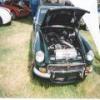Stagea Questions
Announcements
-
Similar Content
-
Latest Posts
-
By Dose Pipe Sutututu · Posted
That's why it's lurching, idling shit, and stalled 7 times. Your approach is not ideal, it's literally idle hunting. Let's say your normal idle timing is 20° You would approach the idle timing table like this 800rpm 20° 900rpm 20° 950rpm 0° 1000rpm 20° So when your car hits the 950rpm cell, there isn't enough torque so it falls down to the 900rpm cell which has enough timing to produce the torque to reach the idle target again. Then you'll need to dumb down the PID for the idle control motor to essentially ignore the 950rpm cell. There's an art to great braps, when you don't have the option to advance an intake cam at idle. @GTSBoy going to be real mad 🤣 -
Not going to lie. When I just saw this, for a moment I thought it was an interior shot of a VN Commodore...










Recommended Posts
Create an account or sign in to comment
You need to be a member in order to leave a comment
Create an account
Sign up for a new account in our community. It's easy!
Register a new accountSign in
Already have an account? Sign in here.
Sign In Now